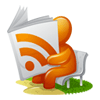AIEEE Test Patterns
The AIEEE entrance test consists of two papers:
*
First paper - Physics, Chemistry and Mathematics for BE and BTech courses [360 marks, 3 hours]
*
Second paper - Mathematics, Aptitude Test and Drawing for Bachelor of Architecture and Bachelor of Planning academic programs [340 marks, 3 hours]
Syllabus for AIEEE Exam
Topics covered in Biology (Botany & Zoology)
The Living World, Unity of Life, Diversity of Life, Organism and Environment, Multicellularity : Structure and Function—Plant Life, Multicelluarity: Structure and Function—Animal Life, Continuity of Life, Origin and Evolution of Life, Application of Biology
Topics covered in Chemistry
Some Basic concepts, States of Matter, Atomic Structure, Solutions, Chemical Energetics and Thermodynamics, Chemical Equilibrium, Redox Reactions and Electrochemistry, Rates of Chemical Reactions and Chemical Kinetics, Surface Chemistry, Chemical Families – Periodic Properties, Chemical Bonding and Molecular Structure, Chemistry of Non-metals – I, Chemistry of Non-Metals – II, Chemistry of lighter Metals, Heavy Metals, Chemistry of Representative Elements, Transition Metals including Lanthanides, Coordination Chemistry and Organo Metallics, Nuclear Chemistry, Purification and Characterisation of Organic Compounds, Some Basic Principles, Hyderocarbons, Organic Compounds Containing Halogens, Organic compounds containing Oxygen, Organic Compounds Containing Nitrogen, Synthetic and Natural Polymers, Bio Molecules and Biological Processes, Chemistry in Action, Environmental Chemistry,
Topics covered in Physics
Units And Measurement, Description Of Motion In One Dimenstion, Description Of Motion In Two And Three Dimensions, Laws Of Motion, Work, Energy And Power, Rotational Motion And Moment Of Inertia, Gravitation, Solids And Fluids, Oscillations, Waves, Heat And Thermodynamics, Transference Of Heat, Electrostatics, Current Electricity, Thermal And Chemical Effects Of Currents, Magnetic Effects Of Currents, Magnetostatics, Electromagnetic Induction And Alternating Currents, Ray Optics, Wave Optics, Electromagnetic Waves, Electron And Photons, Atoms, Molecules And Nuclei, Solids And Semi-Conductors Devices,
Aptitude Test In Architecture
Part I Awareness of persons, places, buildings etc. of Architectural importance. Visualising three dimensional objects from two dimensional drawings. Visualsing different sides of three dimensional objects. Identifying commonly used materials and objects based on their textural qualities and colour. Analytical reasoning Mental ability.
Part II Three dimensional perception. Understanding and appreciation of scale and proportion of objects, building forms and elements, colour texture, harmony and contrast.
Design and drawing of geometrical or abstract shapes and patterns in pencil. Transformation of forms both 2D and 3D - union, substraction, rotation, development of surfaces and volumes; Generation of plan, elevations and 3D views of objects. Creating two dimensional and three dimensional compositions using given shapes and forms.
Sketching of scenes and activities from memory of urban-scape (public space, market, festivals, street scenes, monuments, recreational spaces etc.), landscape (river fronts, jungles, gardens, trees, plants etc.) and rural life.
Read More ->>



